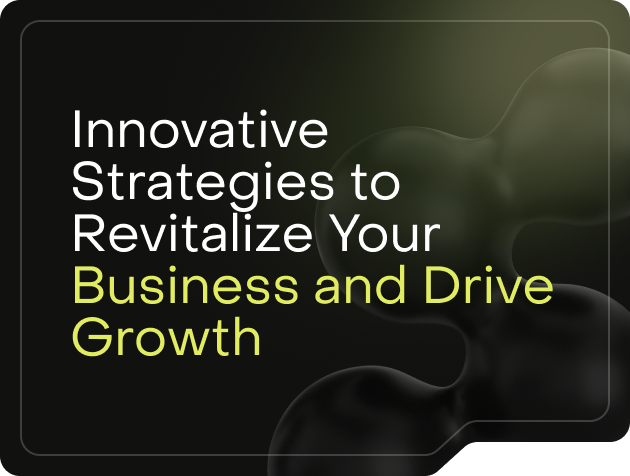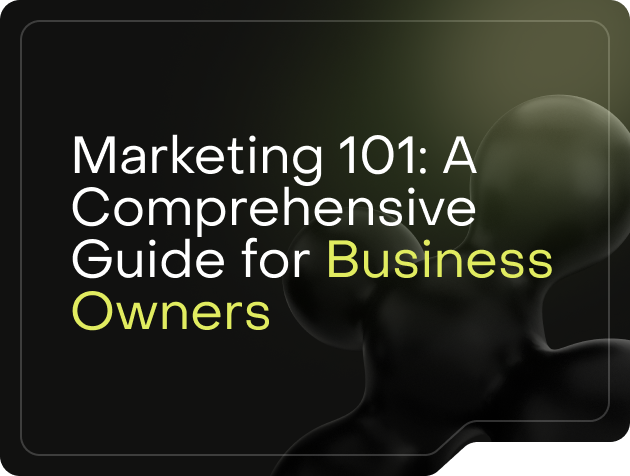According to Forbes, 29% of all business is conducted online, yet 21% of owners report that low traffic is a significant issue. This gap isn’t due to market saturation. It’s due to underperforming websites, particularly homepages, that fail to convert.
Your homepage is the frontline of your digital brand. For potential clients, it’s the first impression, and often the last if it’s not built for clarity, credibility, and conversion.
At AVINTIV, we build high-converting homepages that motivate users to take action, and we’re revealing those secrets today.
Follow this guide if you want to refresh your homepage design in a way that makes a lasting impact.
TL;DR: What Makes a Homepage Convert
|
Why Your Homepage Drives Results
Before optimizing landing pages, investing in content, or running paid campaigns, you need a homepage that performs. It’s often the most visited and most important page on your website. If it fails to engage or communicate value clearly, your entire marketing funnel suffers.
Users decide whether to trust your business within seconds of landing on your homepage.
This snap judgment affects whether they bounce or explore, whether they fill out a form or abandon the site. A homepage that isn’t structured to convert leads to wasted ad spend, lower engagement, and fewer qualified opportunities.
A high-performing homepage serves multiple strategic functions:
- It effectively communicates your value proposition
- It directs users to the right next step, whether that’s learning more, scheduling a call, or exploring a product
- It builds immediate trust with social proof, design clarity, and consistent branding
A homepage that drives results is structured, intentional, and user-focused.
By aligning design with user behavior and business goals, you set the stage for higher conversion rates and stronger long-term outcomes.
The Anatomy of a High-Converting Homepage
Here’s a breakdown of the essential components you need to include if you want your homepage to perform at a high level.
Each of these elements contributes directly to user trust, engagement, and conversion potential.
1. Crafting a Value-Driven Headline
Your homepage headline is one of the most critical elements of your site. It sets the tone, frames your value, and either encourages users to stay or drives them away.
To make it effective, your headline should:
- Clearly state who you help and what you help them achieve.
- Reflect your market position or unique selling point.
- Prioritize clarity over creativity.
- Prompt engagement or interest.
Also consider your subheadline: this is where you expand slightly, providing more context or detail to support your primary message. Example: “Premium Brand & SEO Growth for Founders Ready to Scale.”
This example conveys three key points: the audience (founders), the service (brand and SEO growth), and the transformation (scaling). Every word serves a purpose.
2. Designing the Above-the-Fold Experience
Above-the-fold content is what users see before they scroll, and it often determines whether they stay on the page or leave immediately.
This section must be clear, focused, and aligned with the user’s intent. It should:
- Establish who you are and what you offer within the first few seconds.
- Present a single, action-oriented CTA that speaks directly to your target audience’s next logical step.
- Use a visual asset, like a background video, animation, or image, that reinforces your message and builds credibility.
Every element above the fold should work together to reduce friction and guide users into the rest of the page.
If your headline, CTA, and visual don’t align, users won’t scroll — they’ll leave. The layout should also be responsive and mobile-first, ensuring usability and readability across all screen sizes.
3. Creating Visual Flow & Layout Hierarchy
Your homepage should guide users effortlessly through content, helping them understand your value without cognitive overload. Effective visual flow guides the eye from one key element to the next in a logical and prioritized manner.
If users have to work to understand what’s important, they’ll disengage. A layout hierarchy ensures that users always know where to look next and what information is most important.
Key principles to follow:
- Z-patterns or F-patterns for readability: These layout models mimic how people naturally scan a screen, especially on a desktop.
- Structured sections with clear labels: Each content block should have a defined purpose with no floating copy or vague visuals.
- Whitespace used with intent: The intentional use of whitespace effectively separates content, highlights key actions (CTAs), and enhances focus.
- Contrast and typography hierarchy: Headings should stand out, subtext should be scannable, and font sizes should create clear visual cues.
For decision-makers evaluating your services, a homepage that’s easy to scan and digest shows that your brand is professional, thoughtful, and clear in its communication — three traits that build confidence fast.
4. Writing CTAs That Drive Action
If you communicate your value and build trust, a strong CTA helps capitalize on that momentum. The key is making CTAs feel like the logical next step, not an aggressive pitch.
Best practices for writing CTAs that convert include the following.
- Use benefit-first language like “Claim Your Free Strategy Session” or “Download our Full Case Study.”
- Match design to intent with brand-aligned colors with sufficient contrast to capture the viewer’s attention.
- Place CTAs strategically, typically every 1.5–2 screen heights.
- A/B test different CTA copy to determine which phrases resonate with your audience.
CTAs should reinforce the user’s journey. A CTA that’s clearly tied to value will outperform any pushy or ambiguous call every time.
5. Building Trust with Social Proof
Social proof provides the external validation that reinforces your positioning. When placed correctly, it assures visitors that others have achieved success with your services and that real outcomes support your claims.
Your home page social proof may include:
- Client testimonials
- Case study snapshots
- Press mentions and partner logos
Placement tip: Social proof is most effective after you’ve articulated your value and established context. Position it in the mid-to-lower scroll range to reinforce key claims and minimize friction before a call-to-action.
6. Structuring Your Navigation with Intention
Website navigation is essential in shaping the user experience, driving conversions, and supporting SEO efforts. If users can’t find what they’re looking for quickly, they won’t stay.
A high-performing homepage features navigation that:
- Keeps menus short and clear: 5–7 top-level links max. Too many choices overwhelm users and dilute action.
- Structures links around user intent, not internal categories: Use labels like “Services,” “Work,” “Insights,” and “About” to frame what matters.
- Includes at least one CTA-oriented link: “Schedule a Call” or “Contact” should be persistent across all devices.
- Avoids dropdown overload: Submenus should be used sparingly and only when they improve clarity.
Good navigation drives action and builds confidence. Clear, strategic navigation reflects operational excellence, which in turn earns trust.
7. Optimizing for Speed, Mobile, and SEO
Speed matters. Google prioritizes fast-loading pages because users do. Research consistently shows that even a slight one-second delay can impact conversion rates.
Mobile responsiveness is a must. Most online traffic is mobile, meaning your homepage needs to function seamlessly on every screen size. You need to prioritize:
- Responsive design that adjusts layout fluidly
- Mobile-first testing to ensure buttons, fonts, and media display correctly
- Optimized tap targets and scroll behavior for thumb-friendly interaction
SEO integration turns visibility into traffic. Your homepage should support keyword strategies tied to your brand and services. This strategy includes:
- Keyword-optimized headers and subheaders that reflect your core offerings
- Meta titles and descriptions that reflect your target keywords
- Alt text on images and accessible markup to support both rankings and usability
Minimum technical performance benchmarks:
- Sub-3-second page load times on both desktop and mobile
- Core Web Vitals compliance (especially LCP, CLS, and FID)
- Structured metadata and schema markup to enhance search appearance
Common Homepage Mistakes That Kill Conversions
Let’s deconstruct the traps that silently destroy homepage ROI. Avoiding them is just as critical as implementing best practices.
Mistake #1: Weak or Missing CTAs
Too many homepages rely on vague phrases like “Learn More” or bury their CTA beneath blocks of text, creating friction and leaving users without a clear next step.
Why it matters: Without a strong, visible CTA, visitors are unsure of where to go or what to do next.
What to do instead:
- Use specific, benefit-driven calls
- Ensure CTA placement is strategic
- Design your buttons to stand out and align with your brand
Mistake #2: Visual Overload or Clutter
It’s tempting to add flashy animations or multiple competing visual elements. However, too much motion or complexity can overwhelm the user and obscure your message.
Why it matters: Visual chaos creates confusion. When users are unable to focus, they are less likely to convert.
What to do instead:
- Strip your layout down to what’s essential
- Use whitespace strategically
- Reinforce your message with your layout
Mistake #3: Messaging That Misses the Mark
Generic, boilerplate copy like “We help businesses grow” might sound safe, but it says nothing specific. Visitors scanning your site need clarity, not buzzwords.
Why it matters: Users are scanning for relevance. If your copy doesn’t immediately communicate value, they’ll move on.
What to do instead:
- Make it clear who you help, how you help, and what results to expect
- Speak directly to your ideal buyer
- Get clear with your headlines and subheadings
Mistake #4: Poor Mobile Optimization
Some sites still treat mobile as an afterthought, even though it’s where the majority of traffic originates.
Why it matters: According to SEMRush data, there is 313% more traffic on mobile than desktop. If mobile users can’t navigate it easily or read your content, they’ll leave immediately.
What to do instead:
- Ensure buttons are appropriately sized and spaced for touch interaction.
- Optimize font sizes and layout for vertical scrolling.
FAQs About High-Converting Homepages
What Content Should Be on a Homepage?
Your homepage should clearly state what you do, who it’s for, and what action the visitor should take next.
How Can I Make My Homepage More Attractive?
A clean, modern design with consistent branding, strategic visuals, and a simple layout makes your homepage visually appealing and easier to navigate.
How Long Should a Homepage Be?
Your homepage should be long enough to communicate value without overwhelming or distracting the visitor.
How Many CTAs Should I Include?
Aim for 2–4 consistent, strategically placed CTAs to guide users through the page without cluttering the experience.
Final Thoughts: Your Homepage Is Your Conversion Launchpad
Your homepage is your website’s best-performing asset when done right. Every design decision, copy block, and CTA should move users closer to action.
That’s what we build at AVINTIV. Premium, performance-focused homepages that don’t just look the part — they convert leads.
Let’s build yours. Schedule your discovery call today.





